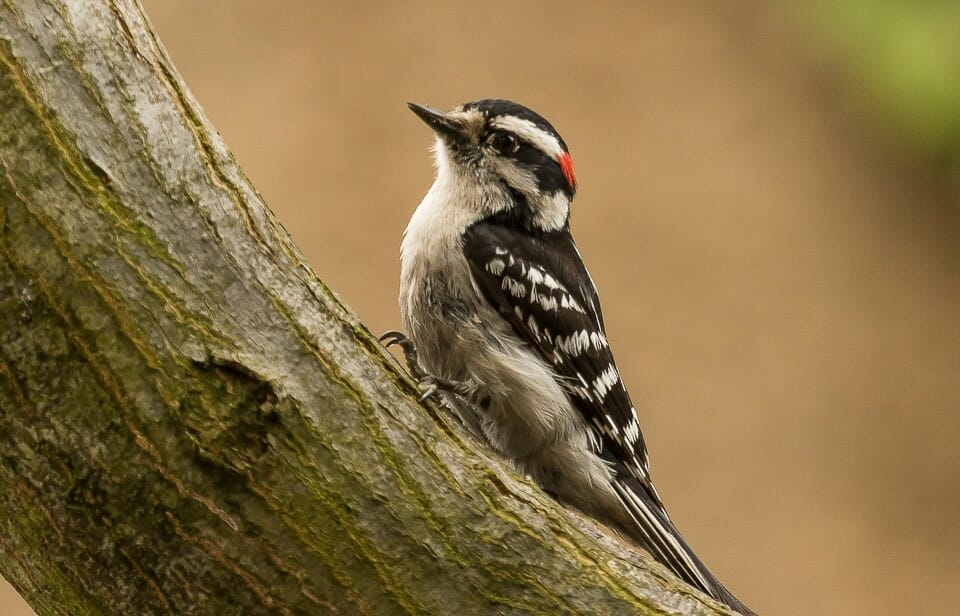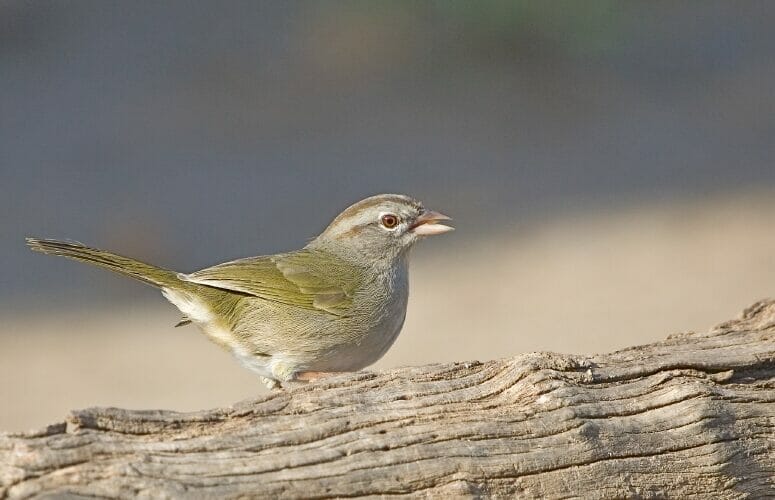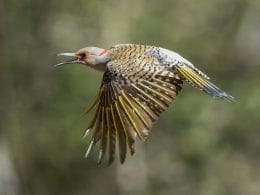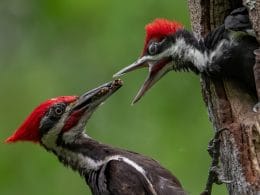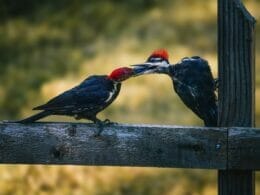You might be familiar with the downy woodpecker as one of the most frequent birds found in American backyards, but you might not be as familiar with its cousin, the hairy woodpecker.
Saying that, you may have spotted one of these birds without even realizing it, as they look nearly identical to the Downy species.
Finding the difference between a Downy and a Hairy Woodpecker can be difficult, but if you know what to look for, with a bit of practice you should be able to spot the very subtle differences between these two birds.
Both of these species of woodpeckers can be found living side by side over most of North America, although the Downy is more likely to stop by your garden.
If you want to take your bird-watching skills to the next level, or you’re just interested in the tiny differences between these two birds, keep reading to find out everything you need to know about the Hairy and Downy Woodpeckers!
Hairy Woodpecker (Dryobates villosus)
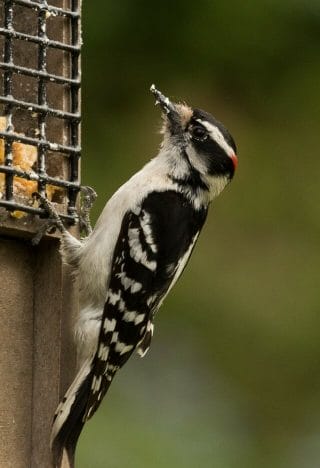
The Hairy Woodpecker is a medium sized member of the woodpecker family and has a clean white breast and black back. The wings have white bars on them, along with some white on the back, neck and eyebrow. A red crest is visible at times.
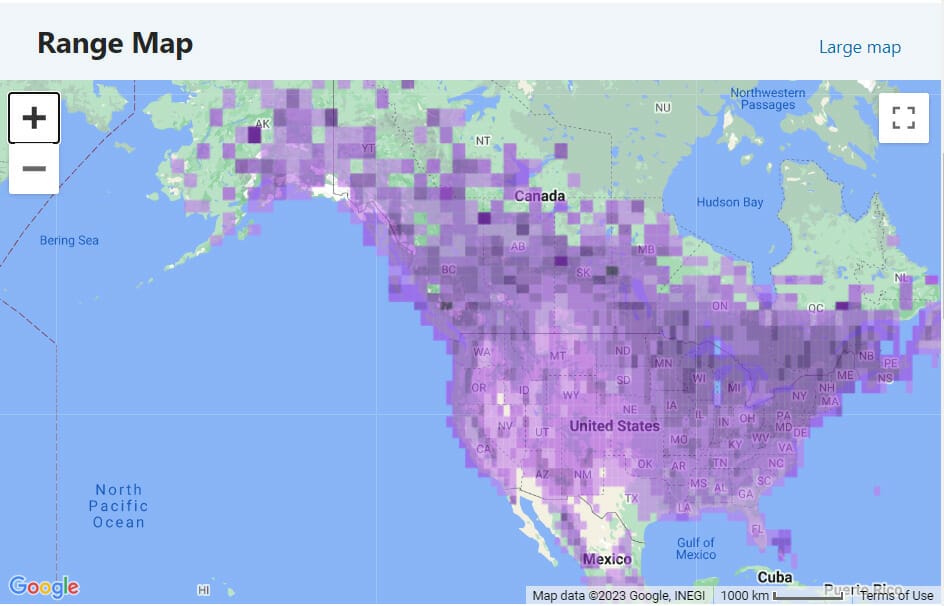
Hairy Woodpeckers are resident across continental America, into Canada and Alaska. It is less common in the southern states of Texas and Arizona. Its habitat is forested areas with large trees but it will visit more urban areas to access food at feeders.
Downy Woodpecker (Dryobates pubescens)

A small woodpecker with familiar black and white plumage. Strong markings on the head with a bright red crest. It ihas a short black bill.

The Downy Woodpecker is more widespread in the U.S. than the Hairy. It can be found in any area with trees and the population in the west prefers riparian environments.
Differences Between the Woodpeckers
The Feathers
Usually, the look and colors of a bird’s feathers are the easiest way to identify what species it is, but the Hairy and Downy woodpeckers similarities make things hard for us. They both have feather patterns of black and white, and the males of both species have a hint of red on their heads, so they initially look identical.
Even though the inner tail feathers of both birds are black and the outer tail feathers are white, there are a few subtle differences between the two that allow you to tell them apart.
Downy Woodpeckers feature a few black bars or spots on the white outer tail feathers, but Hairy Woodpeckers’ outer tail feathers are often unmarked and simple.

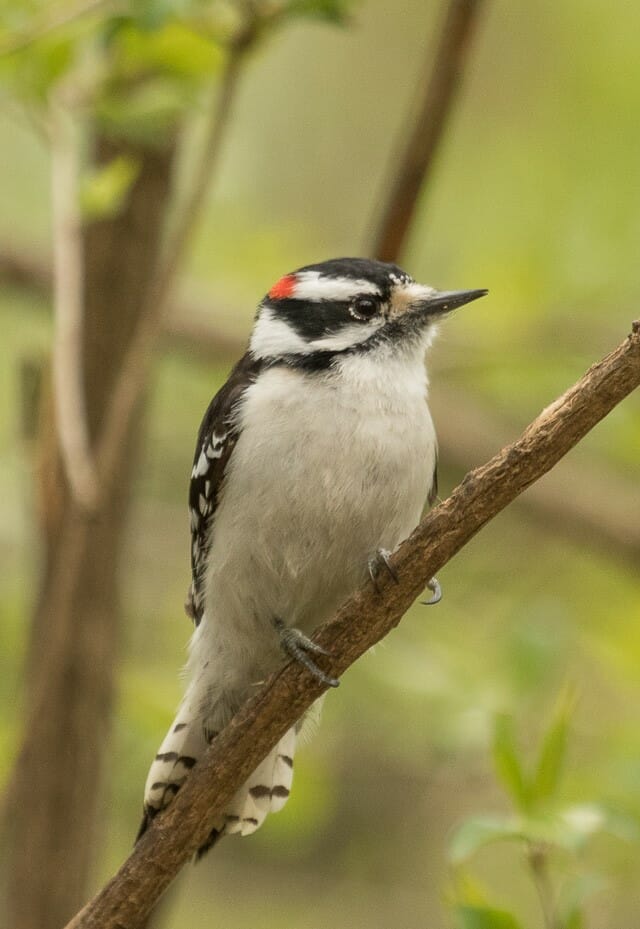
Their Size
The second easiest way to tell bird species apart is usually through their size, but again these woodpeckers like to make things difficult. It’s quite difficult to tell the difference in size between them unless they are standing next to one another, which rarely happens.
| Downy | Hairy | |
| Length | 5.5-6.7 inches | 7.1-10.2 inches |
| Wingspan | 9.8-11.8 inches | 13-16.1 inches |
| Weight | 0.7-1 ounces | 1.4-3.4 ounces |
The Beaks
If you look at the shape of their bills, you can more accurately determine the differences in size between the two species of woodpecker.
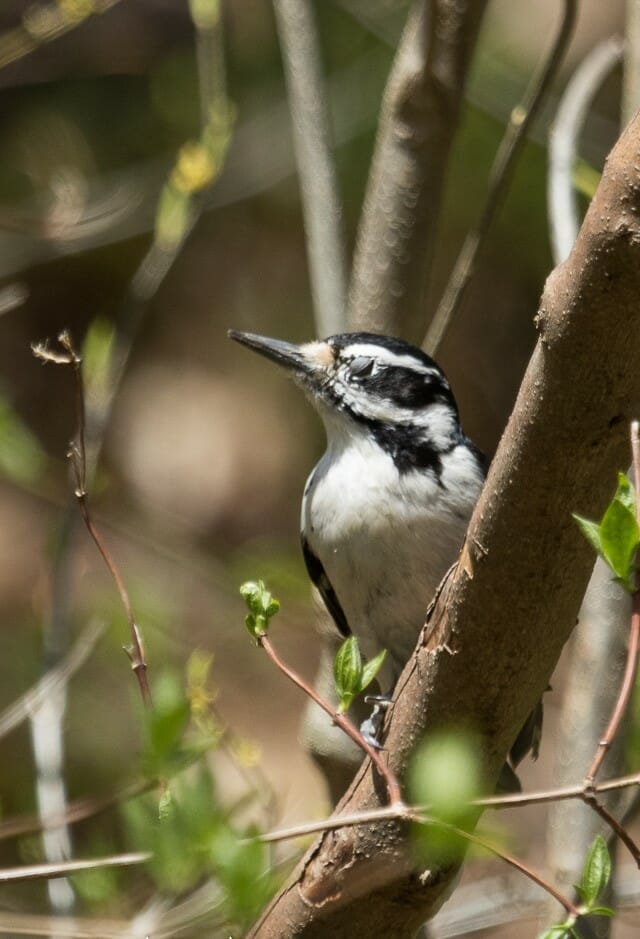
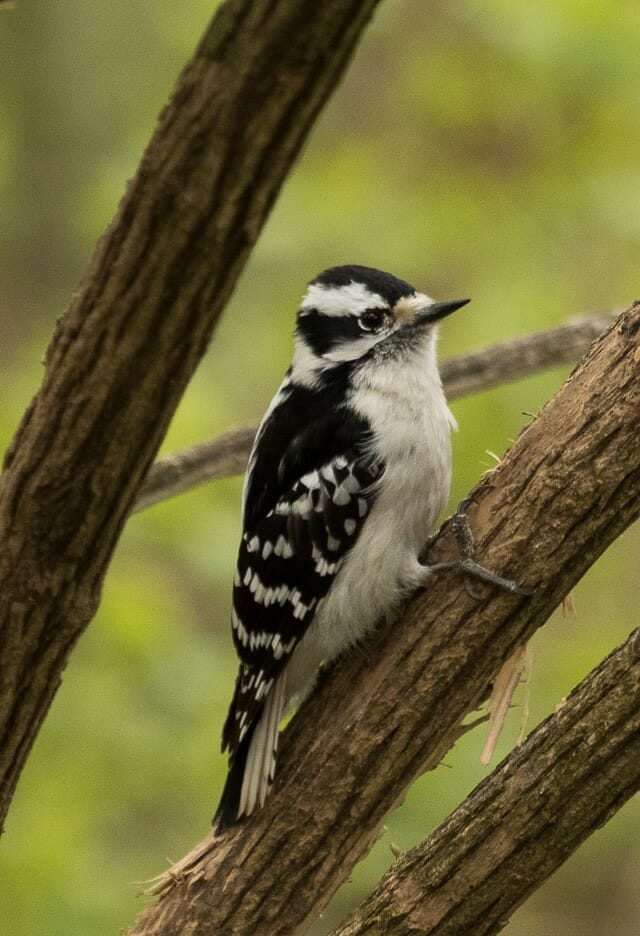
The beak of the Downy (photo on the right) is short and stunted; it is hardly longer than the space that separates the front of its head and its eye.
The bill of the Hairy Woodpecker (photo on the left) is significantly longer and more robust, and it is almost as long as the head of the bird.
Their Call
You’ve probably heard the brief, cheerful pik and the high-pitched, descending whinny that is characteristic of a Downy Woodpecker’s call.
The crisp and startling peek of the Hairy Woodpecker is reminiscent of the sound of a squeaky dog toy and is the more distinctive call of this species of woodpecker.
Hairy Woodpecker Call
Downy Woodpecker Call
In contrast to the sound of the Downy Woodpecker, the rattling of the Hairy Woodpecker is harsh and consistent in pitch.
Habitat Preferences
When trying to work out whether you’re looking at a Downy Woodpecker to a Hairy Woodpecker, the habitat should be taken into consideration. Though both of these birds can be found in many places across the United States, they both prefer certain areas over others.
Downy Woodpeckers are more likely to be spotted in suburban areas and smaller parks than Hairy Woodpeckers are. In general, hairy woodpeckers prefer densely wooded places with huge trees to less-forested areas.
Don’t Get The Fledglings Confused!
When you add baby birds into this mix, the job of working out which species is which only gets harder. Young Downy and Hairy Woodpeckers can be difficult to distinguish between at first, especially if it’s right after they leave the nest.
Fledglings of both woodpeckers have a red patch on top of their heads, whilst adult males of both species have a red patch on the rear of their heads. Sometimes, particularly in immature hairy woodpeckers, the patch will be yellow rather than red. The younger birds can have additional black marks on their sides or white back stripes.
If you give one of these puzzling fledglings some time and attention, you will most likely see its parents come to feed it. Use the guide above and see if you can work out its species!
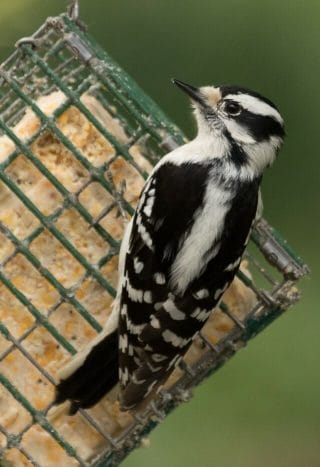
Attracting Woodpeckers To Your Backyard
If you love birds or just want a bit more wildlife in your area, then there’s a few things you can do to attract some of these birds to your garden. Try some of these ideas to see what works.
Make Suet Cakes/Food
Suet and suet cakes can be presented to the birds in wire mesh baskets that are hung from trees or in holes that have been drilled into logs. Suet is the uncooked fat that is found around the kidneys and loins of beef. Because of its high-fat content, it provides birds with a great deal of energy, which is especially beneficial when the temperature is low.
Even though suet is traditionally manufactured from rendered animal fat, some companies also provide plant-based alternatives using vegetable shortening or nut butter. The fats are combined with other things, including seeds, oats, fruits, and mealworms.
It’s an offering that is heavy in fat and packed with protein, so it attracts both insect-eating species and omnivores.
Other Seeds
If you don’t want to make/buy suet, then another option is to put peanuts and sunflower seeds in a bird feeder that has a hook or perch on it so that tree-climbing birds may access the food.
Don’t Cut The Trees
You should not cut down dead trees so long as they aren’t dangerous to keep around. The woodpeckers will show their appreciation by visiting you.
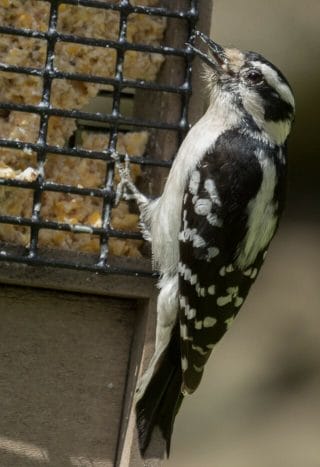
Summary
Although both the Hairy and Downy woodpeckers look remarkably similar to each other, there are a few subtle differences between the two species.
Use the guide above to see if you can work out which bird is paying a visit to your garden.
FAQ
Most of the time, they are looking to uncover grubs and larvae that are hidden under the bark. If you look at trees where there are woodpeckers present, you can often see a series of small holes where they have been working a tree.
No, they don’t. The holes caused by woodpeckers as they nest or look for food, is only really minor and the trees can tolerate it.
Studies have shown that woodpeckers can hammer a tree around 20 times per second and up to 12,000 a day.




